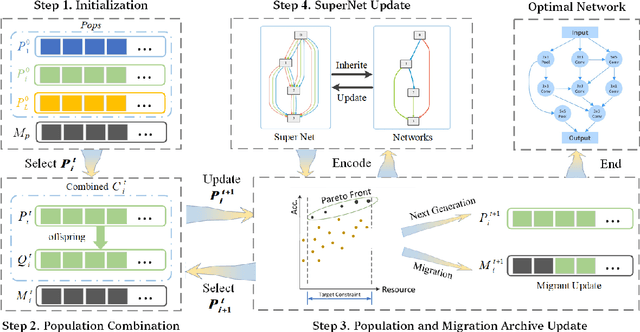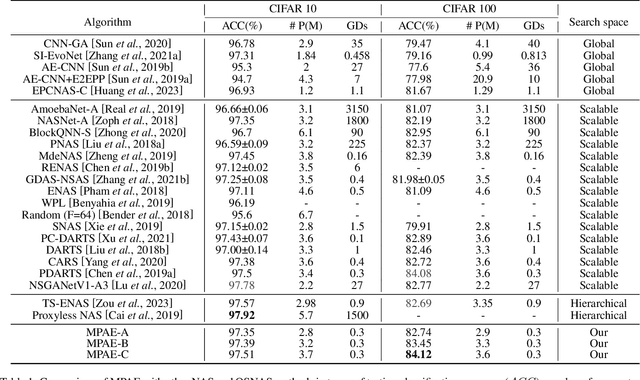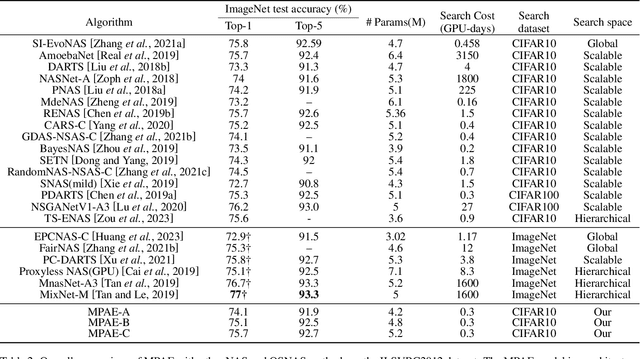Junwen Xu
An Evolutionary Network Architecture Search Framework with Adaptive Multimodal Fusion for Hand Gesture Recognition
Mar 27, 2024Abstract:Hand gesture recognition (HGR) based on multimodal data has attracted considerable attention owing to its great potential in applications. Various manually designed multimodal deep networks have performed well in multimodal HGR (MHGR), but most of existing algorithms require a lot of expert experience and time-consuming manual trials. To address these issues, we propose an evolutionary network architecture search framework with the adaptive multimodel fusion (AMF-ENAS). Specifically, we design an encoding space that simultaneously considers fusion positions and ratios of the multimodal data, allowing for the automatic construction of multimodal networks with different architectures through decoding. Additionally, we consider three input streams corresponding to intra-modal surface electromyography (sEMG), intra-modal accelerometer (ACC), and inter-modal sEMG-ACC. To automatically adapt to various datasets, the ENAS framework is designed to automatically search a MHGR network with appropriate fusion positions and ratios. To the best of our knowledge, this is the first time that ENAS has been utilized in MHGR to tackle issues related to the fusion position and ratio of multimodal data. Experimental results demonstrate that AMF-ENAS achieves state-of-the-art performance on the Ninapro DB2, DB3, and DB7 datasets.
Multiple Population Alternate Evolution Neural Architecture Search
Mar 11, 2024



Abstract:The effectiveness of Evolutionary Neural Architecture Search (ENAS) is influenced by the design of the search space. Nevertheless, common methods including the global search space, scalable search space and hierarchical search space have certain limitations. Specifically, the global search space requires a significant amount of computational resources and time, the scalable search space sacrifices the diversity of network structures and the hierarchical search space increases the search cost in exchange for network diversity. To address above limitation, we propose a novel paradigm of searching neural network architectures and design the Multiple Population Alternate Evolution Neural Architecture Search (MPAE), which can achieve module diversity with a smaller search cost. MPAE converts the search space into L interconnected units and sequentially searches the units, then the above search of the entire network be cycled several times to reduce the impact of previous units on subsequent units. To accelerate the population evolution process, we also propose the the population migration mechanism establishes an excellent migration archive and transfers the excellent knowledge and experience in the migration archive to new populations. The proposed method requires only 0.3 GPU days to search a neural network on the CIFAR dataset and achieves the state-of-the-art results.
 Add to Chrome
Add to Chrome Add to Firefox
Add to Firefox Add to Edge
Add to Edge